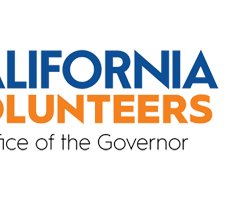Building on his calls for school districts to restrict the use of smartphones on school campuses, Governor Gavin Newsom on Monday, Sept. 23 signed Assembly Bill 3216, the Phone-Free School Act, to require every school district, charter school and county office of education to adopt a policy limiting or prohibiting the use of smartphones by July 1, 2026.
Authored by Assemblymembers Josh Hoover, David Alvarez, Josh Lowenthal, and Al Muratsuchi, the bipartisan legislation is designed to support the mental health, academic success, and social wellbeing of California’s students.
“We know that excessive smartphone use increases anxiety, depression, and other mental health issues – but we have the power to intervene. This new law will help students focus on academics, social development, and the world in front of them, not their screens, when they’re in school,” said Governor Gavin Newsom.
“Reducing phone use in schools is essential for minimizing digital distractions and making space for stronger and more meaningful in-person connections. AB 3216 isn’t only about classroom instruction, it’s about protecting the mental health and social and emotional well-being of California’s kids,” added First Partner Jennifer Siebel Newsom.
In 2019, Governor Newsom signed AB 272 (Muratsuchi) into law, which specified that school districts have the authority to regulate the use of smartphones during school hours. The legislation was a crucial first step in efforts to minimize distractions and foster a more conducive environment for students to learn. In June, the Governor announced efforts to restrict the use of smartphones during the school day.
The development of the policies will involve significant stakeholder participation to ensure they are responsive to the unique needs and desires of the local students, parents and educators and must allow students to use their phones in the case of an emergency, or in response to a perceived threat of danger, or as allowed by a teacher, administrator, doctor or the student’s individualized education program.
Excessive smartphone use among youth is linked to increased anxiety, depression, and other mental health issues. A recent Pew Research Center survey found that 72 percent of high school and 33 percent of middle school teachers report cell phone distractions as a major problem. Common Sense Media found that 97 percent of students use their phones during the school day for a median of 43 minutes. Combined with the U.S. Surgeon General’s warning about the risks of social media, it is urgent to provide reasonable guardrails for smartphone use in schools.
Supporting smartphone free classrooms
“I appreciate the leadership of Governor Newsom and our bipartisan coalition of legislators that worked together to make the Phone-Free Schools Act a reality. AB 3216 is a major victory for protecting and improving the mental health and academic outcomes of students across California,” said Assemblyman Josh Hoover. “Research continues to demonstrate the potential harms of smartphone use among children. The growing use of these devices in a child’s everyday life can contribute to lower test scores, anxiety, depression, and even suicide. I am proud our state is taking action to limit the use of smartphones during the school day and protect kids from these harms.”
Assemblymember Al Muratsuchi, Chair of the Assembly Education Committee said, “I thank the Governor for signing AB 3216. California school districts should place limits on student smartphone use on campus during school hours, unless approved by teachers or administrators for academic, emergency, or other purposes. In 2019, I authored Assembly Bill 272, to encourage school districts to consider such limits. Since then, growing research shows excessive smartphone use not only interfering with learning but also contributing to teenage anxiety, depression, and cyberbullying. All school districts should develop their own appropriate policy to balance appropriate student use of smartphones at school with curbing the impact of excessive smartphone use on a student’s educational, social, and emotional well-being.”
Statewide efforts for youth mental health
California is transforming its entire mental health and substance use disorder system, with a special focus on youth. For the youngest Californians, Governor Newsom developed the Master Plan for Kids’ Mental Health to provide every Californian aged 0-25 with increased access to mental health and substance use disorder supports. The Master Plan also includes the Children and Youth Behavioral Health Initiative (CYBHI), a historic investment by the State of California that takes a “whole child” approach to address the factors that contribute to the mental health and well-being of our children and youth.
“AB 3216 represents an important opportunity to address the mental health of our students by restricting smartphones in schools. I have directly engaged with our students, parents, and educators as we have explored the need for this important change,” State Superintendent of Public Instruction Tony Thurmond said. “I will continue to make sure that we hear the voices of our young people, their families, and our hardworking school staff as we implement smartphone restrictions across the state.”





